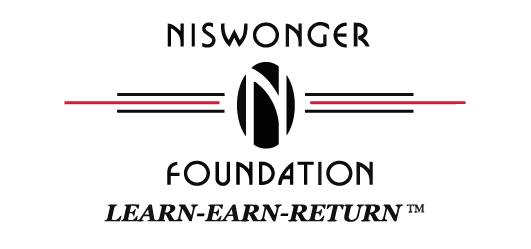Building A Strong Work Force
By Jeff Keeling
Press Business Editor
jkeeling@johnsoncitypress.com
MOUNTAIN CITY – In a heavily wooded subdivision a half-mile off North Church Street, a large construction crew is making quick progress on a three-bedroom home.
Masonry workers mix mortar in a drum and carefully apply brick to the exterior. Inside, with the house under roof and framed, sheet rock is measured, cut and attached to the framing, the resulting walls and ceilings suggesting that completion is drawing near.
Oh, and all but two of the workers are 17-and 18-year-olds.
Child labor violations? Some strange cult? No, just another example of the type of work the Niswonger Foundation is helping school systems accomplish from Pigeon Forge to Mountain City.
When the house is finished next fall and sold to an area family, the proceeds will be plowed back into yet another home, but money won’t have been all that’s gained. Like two already occupied homes on nearby lots, this house will have served as a laboratory for dozens of Johnson County High School students to gain real-life job skills in every aspect of residential building.
The program pays for itself through the home sales and pumps dozens of youngsters with solid job skills into the region’s work force – often after they’ve furthered their educations at area colleges, universities or technical schools.
Such a feat is being pulled off at one of the area’s rural high schools thanks to a few main factors: the determination of the school’s building trades teachers, George Triplett and Tim Roberts, and the seed money and other resources the Niswonger Foundation started providing around 2002.
Selling each home, Triplett says, “generates enough money for us to continue to build. We can truly use it as a teaching facility where students do it all – clear the lot, pour the foundation … all the way to the mailbox. Even the logistics of market values, appraisals – they’re directly involved in all of it.”
In fact, HVAC work and cabinet installation are the only things that are “subbed out” to local contractors.
The experiment has been a successful one beyond its becoming financially self-supporting. It has helped solve a problem Johnson County educators presented to Greeneville businessman and philanthropist Scott Niswonger when his foundation first made contact with the system nearly a decade ago.
Minnie Miller was superintendent at the time, and Niswonger recalls her response to the foundation when it pitched some of its successful academic programs in Mountain City.
“She said, ‘I’m 8 to 12 miles from a four-lane, the only industry is the prison, but if I could get our vocational programs beefed up and we could produce certified electricians, roofers, brick masons, we could keep 15 to 20 kids a year home in good paying jobs, $15 to $20 an hour.’
“And she pointed out her window, ‘right over there,’ which was Boone (N.C.), where at the time they were building multimillion dollar homes and importing labor.”
Things began to fall into place after that, though much flexibility and determination has been required through the years. The school system was able to acquire nearly 50 acres of land adjacent to the high school.
Triplett remembers that he simply needed more space to teach plumbing, electrical work and carpentry, and so he submitted a proposal to the foundation’s then-director, Buzz Thomas, requesting funds for a new building to enhance school’s masonry program.
Thomas said foundation funds couldn’t be used for a building.
“We resubmitted it and said, ‘what if the students are building their own building.’ He said, ‘that’s perfect,” and the students built their own 3,600-square-foot masonry shop,”
The official three-year, $300,000 Niswonger partnership, which also allowed the high school to hire Tim Roberts as a second building trades teacher, wasn’t over yet, nor was all the money used.
Triplett and others then hatched the home-building idea, and as it worked out, the system was able to cobble together enough money to purchase nearly 50 sloping, wooded acres adjacent to the high school.
“The project had enough money left to purchase the materials for the first home,” he says.
The cedar-sided, four-bedroom home was auctioned after completion, and the program has never looked back.
“Now we’re just rolling on our third house and it will be finished next fall.”
The proceeds have been more than sufficient to cover building costs of each new house, and within months, some of the money will fund a second access road into the property, making it easier for current and future residents to get in and out.
Niswonger calls the project one of his favorites. He says it exemplifies several things about the School Partnership Program: its flexibility, the tenacity of the partners, and the way grace seems to fall so often on the projects.
“What we have learned is one size does not fit all in education,” Niswonger says of the flexibility the partnerships require.
“Not everyone needs to get a four-year liberal arts degree, and we’re running into a severe shortage of people that can actually do things with their hands, build those houses in Mountain City.”
Just because the foundation and school systems are willing to be flexible, though, doesn’t mean everything falls right into place. The programs tend to be so “outside the box” that persistence is a must.
In Mountain City, for instance setting up a system that allowed the schools to operate the building program as a financially self-sustaining entity was by no means easy.
They managed, though, and Niswonger says the results have been great.
